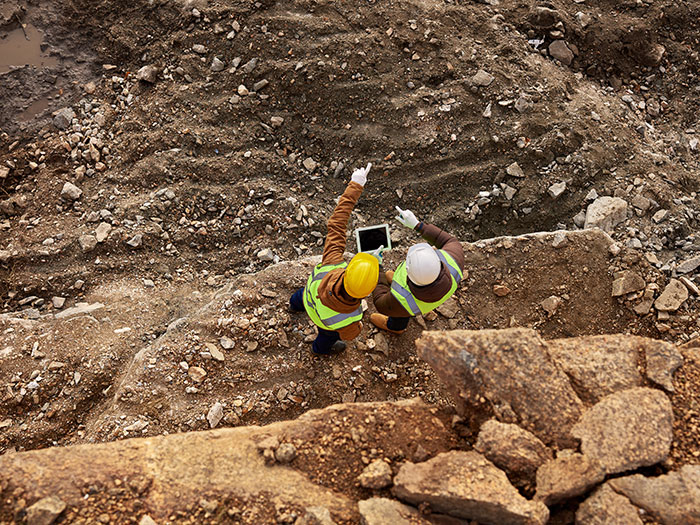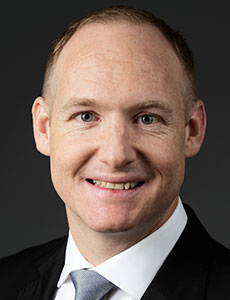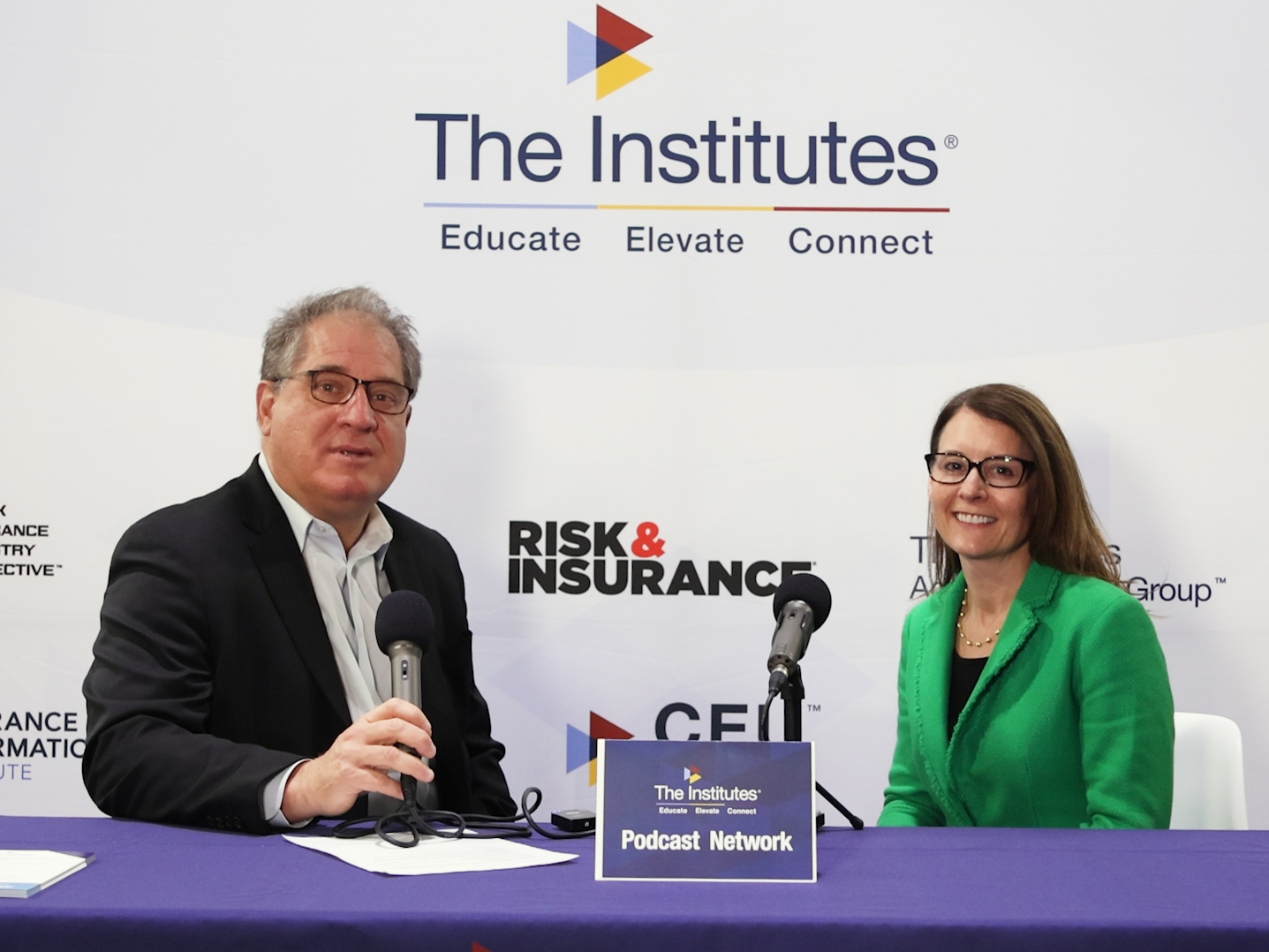Sponsored: TÜV SÜD Global Risk Consultants
Meeting the Fast-Changing Challenges of the Mining Industry

The mining industry is in the midst of transformation.
Demand for mineral resources continues to climb as the population grows, and globalization is driving the need for more materials. Nonetheless, a confluence of challenges is making it harder and harder to satisfy that demand, forcing miners to reevaluate their processes.
One of the fundamental challenges being faced is that mining companies are increasingly forced to mine lower grade, complex ore bodies at greater depths or in more remote locations than ever before.
“We’ve been mining for thousands of years, so as miners continue to produce for a diverse and growing demand for mineral resources, they are mining increasingly complex ore bodies in difficult locations,” said Alun Morris, Mining Focus Group Leader at TÜV SÜD Global Risk Consultants.
In addition, in many remote locations, a lack of resources critical to mining operations presents even more obstacles. Mines are often plagued by lack of water, energy, other critical utilities and locally sourced skilled-labor in remote territories.
“As existing mines continue operating, they are mining and processing much lower grade ores. Where a gold mine might have previously mined ore with a grade of 5 g/ton, it is now mining and processing a grade of, for example, 2.5g/ton.” Morris said. “This has driven innovation, in terms of advances in processing technology, and has also resulted in greater volumes of waste material been produced. The storage of waste material, primarily in Tailings Storage Facilities (TSF), presents significant risks to our clients.”
The mining industry has always faced the challenge of boom and bust pricing cycles. Building economies of scale was the traditional approach to overcoming the rise and fall so miners could maximize returns while the going was good. However, this approach is no longer sustainable and requires a new methodology —prioritizing operational efficiency.
“For example, mining companies know they need to improve the focus on asset management and reliability to not only reduce risk, but to improve operational efficiencies,” explained Morris. “At TÜV SÜD GRC, we are branching out from a traditional insurance support function and providing a more, non-insurance related, consultative engineering service, using our expertise to partner with our clients’ operational functions to help them build up those efficiencies.”
Additionally, the mining industry has realized it needs to be more socially responsible in managing mine development, emissions and waste disposal, as well as the long-term planning for rehabilitation when the life of mine (LOM) expires. Events, such as the Bento Rodrigues disaster due to a TSF failure in Brazil in 2015, bring home the need for much greater due diligence in managing the risks that mining can introduce to external communities.
Preventive Maintenance and Process Control

Alun Morris
Mining Focus Group Leader
One way to improve operational efficiency is to mitigate and, if possible, avoid altogether any production shutdowns caused by poor equipment reliability and failures.
“Companies have been pushing mining equipment harder to produce higher and higher volumes, so the stress on various pieces of critical equipment keeps building,” Morris conveyed. “When something breaks down, the old approach was simply to go in and fix it, but that might result in the whole plant being shut down while that repair is taking place. Now, the strategy is shifting to one of process and equipment health monitoring that allows us to make informed maintenance decisions.”
In the new age of digitalization, mining companies can now increasingly monitor the performance of their equipment in real time through a system of interconnected sensors and informed condition monitoring techniques. This moves asset management strategies into a much more proactive domain and helps identify deteriorating performance much earlier than was previously possible. Done well, this allows world class operators to predict failures, maximize the operational efficiency of key assets and assists the asset management teams in determining appropriate timelines for proactive intervention (i.e. equipment maintenance and/or replacement). The end result is increased up-time and productivity, fewer unplanned outages and a lower, overall cost of maintenance over time.
“Driving down unplanned breakdowns ensures more stability in the production system, less business interruption and improved process control from an operational perspective,” Morris said. “There’s more focus, now, on getting the best productivity from well-designed, well-maintained and efficient processes rather than just scaling everything up.”
Furthermore, remotely-operated equipment improves safety and overcomes the limitations of old equipment. A large mining company recently announced it had hauled 1 billion tons of ore with 80 driverless trucks using autonomous technology overseen from a control center 1,500 kilometers away from the site. Needless to say, technology and innovation are shaping the future of a process dating back thousands of years.
This changing environment will, of course, also introduce potential new challenges. The skillsets of the operations and maintenance teams are ever-changing, and the days of the hands-on technicians with intimate knowledge and intuition of equipment health from smell, touch and sound is unfortunately fading.
“As mining becomes more digitized and we collect more data from connected sensors or operate equipment remotely or autonomously, the industrial control systems managing this data become more susceptible to security threats”, Morris explains. “These threats need to be understood and managed.”
Industry Focus Groups
As part of its continuous effort to add value to clients in key industries, TÜV SÜD Global Risk Consultants established its Focus Group initiative. Presently, there are 5 Focus Groups, which include:
- Mining (including Mineral Processing and Metallurgical Refining)
- Power Generation
- Oil and Chemical
- Pulp and Paper
- Food and Grain
Of the 50 TÜV SÜD GRC engineers who visit mining, mineral processing or metallurgical refining locations worldwide, 16 of these engineers form just part of the Mining Focus Group, which includes individuals from around the globe, representing South Africa, Australia, Brazil, the UK, Canada, the Netherlands, France, Italy and the US.
The Group meets periodically, and the members are actively involved in attending various mining conferences and seminars to keep updated with the latest innovations and developments in the mining sector. This allows the organization to continually reevaluate its approach and helps it to continue to provide first class risk management advice to clients.
Although highly specialized in its respective industry, the Mining Focus Group is able to draw upon the expertise of the other Focus Groups where necessary to best serve client needs.
“Most of our consultants work across multiple industries; the Power Generation, Pharmaceutical and Chemicals industries have previously undergone similar changes and have long been leveraging advanced technology to achieve efficiency, so we’re able to bring that expertise from other industries including Process Safety Management, Process Control, Condition Monitoring and Preventative/Predictive Maintenance, to our mining clients and help them through this current period of change,” Morris said.
TÜV SÜD GRC puts its expertise to work producing resources like technical bulletins to help both its engineers and clients stay up-to-speed on the changing risks and solutions available to the industry. These bulletins address everything from the risk associated with technologically-advanced equipment to solvent extraction and Tailing Storage Facilities.
In 2015, the Mining Focus Group developed an analysis tool to assess the risk associated with Tailing Storage Facilities. Mining lower ore grades generates more waste, and many decades-old tailing storage facilities are ill-equipped to handle the burden. Failure of one of these facilities can result in loss of life, widespread property damage and severe environmental impact.
“This tool helps mining companies decide where they should focus their resources,” Morris explained. “If a company has 50 tailing storage facilities, we will review the risks associated with each one and help our clients create a priority list. We can then hand that list over to our geotechnical experts within our parent company, TÜV SÜD, to conduct a more in-depth analysis and provide physical recommendations to our clients.”
Local Expertise, Global Reach
Making risk engineers available wherever clients operate is part of TÜV SÜD GRC’s effort to be true operational partners for mining companies.
“Having local expertise is important because different geographical regions face different challenges. A mine in Chile, for example, is more vulnerable to earthquakes, while mines in South Africa are the deepest in the world, in some cases almost 4km below the Earth’s surface, which results in significant challenges. Flooding is a significant risk in some regions, while in other regions the greater risk might be water scarcity. Transportation systems to get the mined ore to port are not as developed in some areas and travel distance on poor quality rail or road networks might span up to a thousand kilometers,” Morris elaborated.
Deploying its experts around the global is made possible by TÜV SÜD GRC’s relationship with its parent company, TÜV SÜD.
“Separate divisions within TÜV SÜD focus on Geotechnical Engineering, Process Safety Management, Equipment Failure Analysis and Non-destructive Testing, to name a few . When we need to bring in someone with an advanced skillset, outside of what our practice group can offer, we rely on the resources of TÜV SÜD. They bring a 150-year legacy of high quality and trust,” Morris said.
“Through that partnership and the depth of knowledge we bring across a range of industries, we are continuing to expand on the existing partnerships we have with our clients. More than risk management and insurance information, we can now provide full operational support, even as our clients innovate and introduce new technologies. We have the capabilities to assist them through changing market demands.”
To learn more, visit https://www.globalriskconsultants.com/.
This article was produced by the R&I Brand Studio, a unit of the advertising department of Risk & Insurance, in collaboration with TÜV SÜD Global Risk Consultants. The editorial staff of Risk & Insurance had no role in its preparation.










